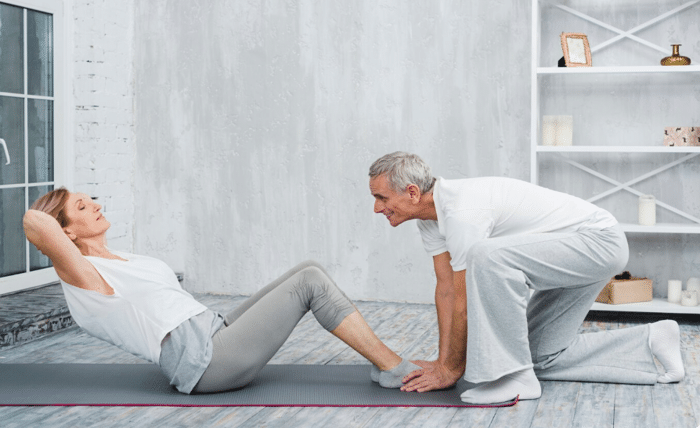
Pelvic floor health is often overlooked but is essential for overall well-being at any age. This post covers what the pelvic floor is, its functions, common issues, and tips to maintain or improve its health.
Understanding the Pelvic Floor
What is the pelvic floor?
The pelvic floor is a group of muscles and connective tissues located at the base of your pelvis. It acts like a supportive hammock, holding your pelvic organs (such as the bladder, uterus, and rectum) in place.
Both men and women have a pelvic floor, but its structure and functions differ slightly based on gender. For women, the pelvic floor plays a key role during pregnancy, childbirth, and sexual health, while for men, it supports urinary and bowel function. Strengthening these muscles can improve overall core stability, and practices like reformer pilates singapore offer targeted exercises that enhance pelvic floor strength, flexibility, and function for both genders.
Functions of the pelvic floor
The pelvic floor is vital for several bodily functions, including:
- Bladder and bowel control:It helps maintain continence by supporting the sphincter muscles that control urination and defecation.
- Sexual function:Strong pelvic floor muscles can improve sexual sensation and orgasm.
- Support for internal organs:The pelvic floor keeps your pelvic organs in place, preventing prolapse (a condition where organs shift or drop).
- Core stability:The pelvic floor works in tandem with the deep abdominal and back muscles to stabilize your core and support good posture.
Why Pelvic Floor Health Matters at Any Age
For younger individuals
Even in your teens and twenties, your pelvic floor health can impact your quality of life. Many young people, particularly athletes, may experience stress incontinence (leakage of urine) when engaging in high-impact sports or exercises. Addressing pelvic floor muscle strength early can help prevent these issues.
During pregnancy and postpartum
For women, pregnancy puts a lot of strain on the pelvic floor. The weight of carrying a baby and the process of childbirth can weaken these muscles, leading to challenges such as incontinence or pelvic organ prolapse. Strengthening the pelvic floor before and after pregnancy is essential for recovery and long-term health.
Through middle age
Hormonal changes during menopause (for women) or andropause (for men) can affect muscle strength, including the pelvic floor. This age group also sees common issues like urinary urgency, incontinence, and discomfort during intimate activities. Regular pelvic floor exercises can mitigate these symptoms and help maintain quality of life.
In later years
A weakened pelvic floor is common in older adults but should not be accepted as a normal part of aging. Strengthening the pelvic floor can reduce issues like overactive bladder, decrease the risk of falling (due to enhanced core stability), and improve overall confidence and comfort.
Signs of a Weak Pelvic Floor
It can be easy to overlook pelvic floor dysfunction until issues become severe. Here are some common signs that you might need to give your pelvic floor more attention:
- Leaking urine when sneezing, coughing, or laughing
- Frequent urinary urgency (a sudden, uncontrollable need to urinate)
- Difficulty emptying the bladder or bowels completely
- Pelvic pain or pressure
- A feeling of heaviness in the lower abdomen
- Pain during intimacy
If any of these symptoms sound familiar, it’s important to consult a healthcare provider or a pelvic floor specialist for guidance.
How to Improve and Maintain Pelvic Floor Health
Thankfully, it’s never too late (or too early) to take care of your pelvic floor. Here are some actionable steps you can start today:
1. Practice Kegel exercises
Kegels are one of the most effective ways to strengthen your pelvic floor. These exercises involve contracting and relaxing the pelvic floor muscles. To identify the correct muscles, try stopping the flow of urine midstream (but only for identification purposes). Once you’ve located the muscles:
- Contract the pelvic floor muscles for 3–5 seconds.
- Relax for an equal amount of time.
- Repeat 10–15 times, and aim to perform three sets a day.
2. Stay active with low-impact exercises
Physical activities like yoga, Pilates, and swimming can strengthen your core while putting minimal strain on your pelvic floor. Many yoga poses, such as Warrior II and Bridge Pose, also directly engage these muscles.
3. Watch your weight
Excess weight puts pressure on your pelvic floor, leading to more strain over time. Eating a healthy, balanced diet and staying active can help you maintain a healthy weight and reduce that pressure.
4. Avoid heavy lifting
If you need to lift heavy objects, engage your core muscles and exhale during the lift to minimize strain. Better yet, limit heavy lifting as much as possible, especially if you already have pelvic floor issues.
5. Stay hydrated and eat fiber-rich foods
Good hydration and a diet rich in fiber help prevent constipation, which can strain the pelvic floor over time. Aim for at least 8 cups of water daily and incorporate fiber-rich foods like vegetables, whole grains, and fruits into your meals.
6. Seek professional help when needed
A pelvic health physiotherapist can assess your specific needs and guide you through tailored exercises or treatments. If you experience persistent symptoms or need hormone imbalance help like those in Glenview, don’t hesitate to seek support.
Conclusion
Your pelvic floor is incredibly important for your overall health and well-being. Whether you’re in your twenties or your seventies, caring for these muscles can improve your quality of life in ways you might not expect—from better bladder control to enhanced core stability and even improved intimacy.




